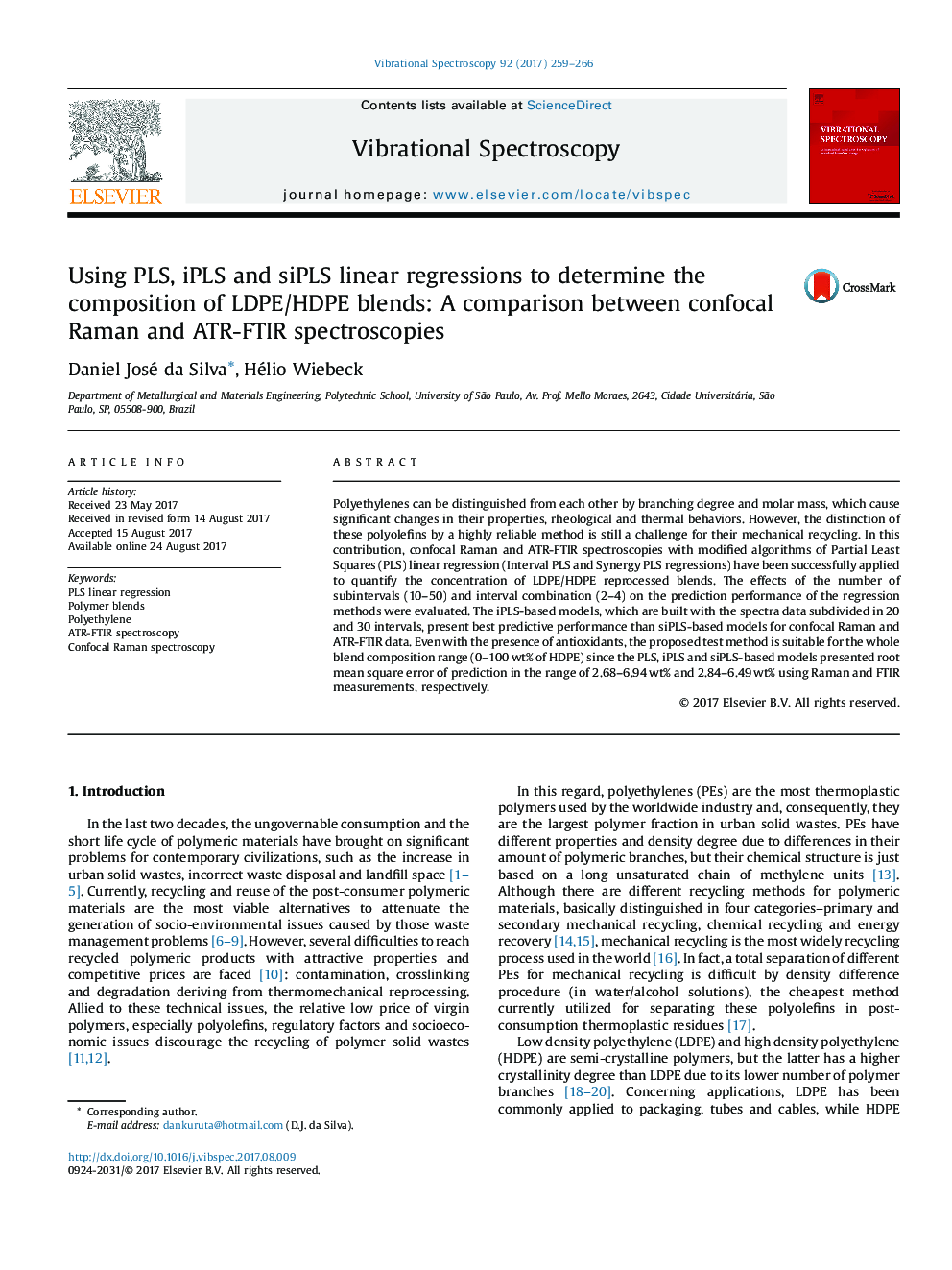| Article ID | Journal | Published Year | Pages | File Type |
|---|---|---|---|---|
| 5141918 | Vibrational Spectroscopy | 2017 | 8 Pages |
Abstract
Polyethylenes can be distinguished from each other by branching degree and molar mass, which cause significant changes in their properties, rheological and thermal behaviors. However, the distinction of these polyolefins by a highly reliable method is still a challenge for their mechanical recycling. In this contribution, confocal Raman and ATR-FTIR spectroscopies with modified algorithms of Partial Least Squares (PLS) linear regression (Interval PLS and Synergy PLS regressions) have been successfully applied to quantify the concentration of LDPE/HDPE reprocessed blends. The effects of the number of subintervals (10-50) and interval combination (2-4) on the prediction performance of the regression methods were evaluated. The iPLS-based models, which are built with the spectra data subdivided in 20 and 30 intervals, present best predictive performance than siPLS-based models for confocal Raman and ATR-FTIR data. Even with the presence of antioxidants, the proposed test method is suitable for the whole blend composition range (0-100Â wt% of HDPE) since the PLS, iPLS and siPLS-based models presented root mean square error of prediction in the range of 2.68-6.94Â wt% and 2.84-6.49Â wt% using Raman and FTIR measurements, respectively.
Related Topics
Physical Sciences and Engineering
Chemistry
Analytical Chemistry
Authors
Daniel José da Silva, Hélio Wiebeck,
